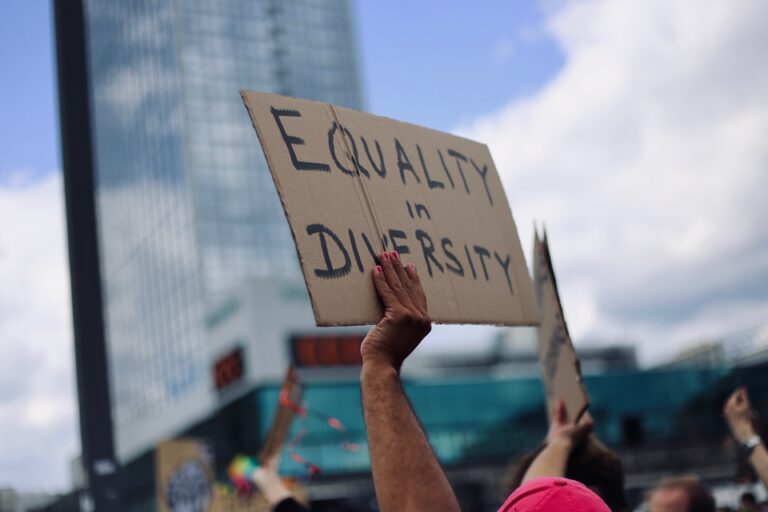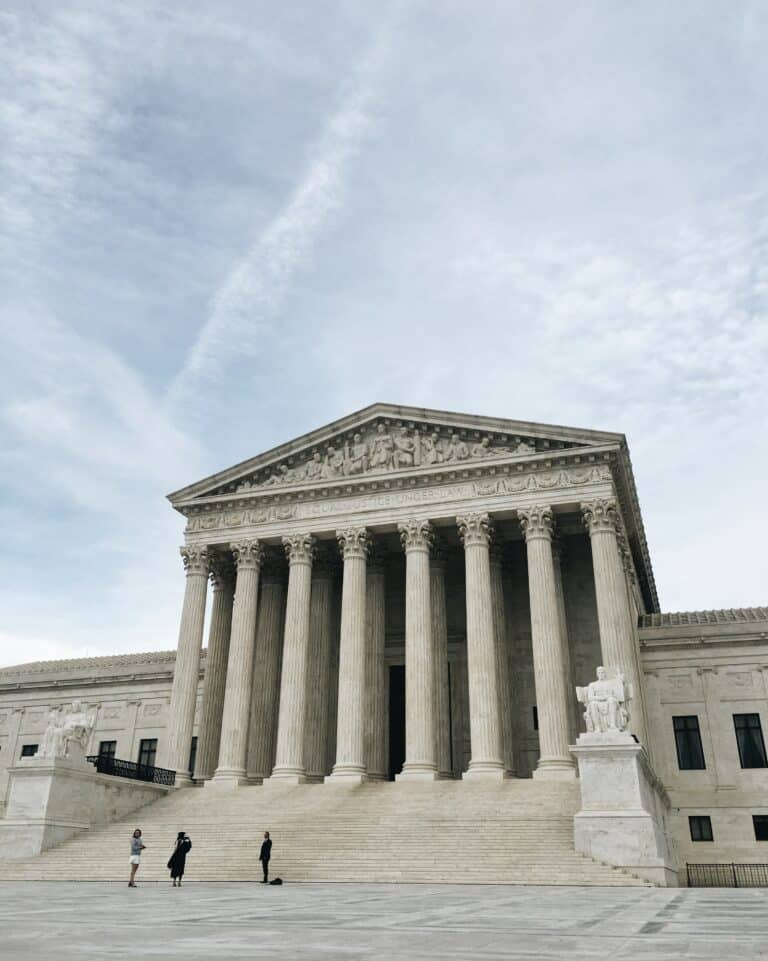Matthew Bodie is the Callis Family Professor at Saint Louis University School of Law. This post is the second installment in a three-part series. Read the first part here.
After Google terminated James Damore for his now infamous memo, he claimed that he was fired for concerted activities protected under the National Labor Relations Act (discussed in Part One) as well as for pointing out “potentially illegal policies/behavior.” This post examines whether Damore might have a claim under Title VII of the Civil Rights Act of 1964 for retaliation for opposing his employer’s (allegedly) discriminatory HR policies. (As noted in the first post, this analysis is inevitably premature, as further facts may come to light that could dramatically change these claims.)
Title VII claims
Title VII—the federal antidiscrimination statute covering race, sex, and other protected categories—also prohibits retaliation against employees for opposing discriminatory activities. A number of commentators have argued that Damore may have a claim under Title VII’s opposition clause, which outlaws discrimination against an employee “because he has opposed any practice made an unlawful employment practice” under Title VII. 42 USC § 2000e-3(a).
In bringing an opposition claim, Damore would need to show three things: that Google engaged in a discriminatory employment practice; that he spoke out against, or otherwise opposed, the discriminatory practice; and that Google fired him because of his opposition to the practice. In addressing the first factor, a number of U.S. Courts of Appeals have held that an employee is also protected for opposing practices that the employee reasonably and in good faith believes to be unlawful, even if the practices are in fact lawful, and the EEOC has endorsed this standard. However, the Supreme Court has not ruled on this broader reading of the statute and explicitly left the issue open in Clark County School District v. Breeden, 532 U.S. 268, 270 (2001).
If the Supreme Court were to require employees bringing an opposition claim to prove actual illegality, Damore would need to show that Google HR policies are in violation of Title VII. There is not currently enough public information about Google’s hiring, promotional, and disciplinary policies to assay their legality. But Damore’s memo alludes to potential illegality in various Google diversity initiatives, such as hiring practices that “lower the bar” for diverse candidates.
Title VII has a blanket prohibition on taking adverse employment actions against employees based on race or sex. The Supreme Court has found private-sector affirmative action plans—ones that do take race or sex into account—to be permissible when a plan is designed to break down old patterns of discrimination, when the plan does not unnecessarily trammel the rights of other employees or bar them from advancing, and when the plan is designed to be a temporary measure. Johnson v. Transportation Agency, Santa Clara County, 480 U.S. 616 (1987). If Google’s promotional policies do take race or sex into account, the company would need to meet these requirements for gender- and race-oriented criteria.
Women and African-Americans are underrepresented both at Silicon Valley companies generally and Google specifically. Google reports that 31% of its employees are women, and that women hold only 20% of its tech positions. Only 5% of its employees are African-American. And it is not just a question of numbers; the Valley has been rife with complaints of sexual harassment and discrimination, including compelling first-person accounts by Susan Fowler and Ellen Pao. Google itself has been enmeshed in a lawsuit with the U.S. Department of Labor over the Department’s investigation of gender-based pay disparity; this preliminary suit could lead into a broader discrimination claim. Regarding the investigation, a Department of Labor official said: “The investigation is not complete, but at this point the department has received compelling evidence of very significant discrimination against women in the most common positions at Google headquarters.” In light of the recent allegations of racial discrimination, Google would seem entitled to leeway in its efforts to remedy past (and even current) discrimination.
If the Supreme Court were to adopt the “reasonable and in good faith” standard for opposition claims, Damore would need to show that he reasonably came to the belief that Google’s policies illegally discriminated against men and/or white people. Given the overall numerical representation of white men in the Google workforce, as well as the allegations of sex and race discrimination against women and people of color, Google could argue that Damore’s belief in the illegality of efforts to ameliorate historic discrimination are obtuse and unreasonable. But if the question is close, that might tip the analysis in Damore’s favor.
Damore clearly satisfies the second factor in an opposition claim because the memo constitutes opposition to Google’s diversity practices. But for the third, he would need to show causation—that he was fired because of his opposition. Although Google willingly admits to firing him because of his memo, the company could argue he was fired not for his opposition but for his promotion of stereotypical and offensive ideas about biological differences between men and women. And it was not until after the memo was made public—and widely attacked as evidence of a misogynistic culture—that Google terminated him. Given the many critiques of Damore’s scientific assertions, Google could claim that the nature of the arguments he made, along with the public outrage that followed, left it no choice. In fact, Damore seems to sympathize. Noting the “heated and threatening scrutiny,” he wrote that “[u]pper management tried to placate this surge of outrage by shaming me and misrepresenting my document, but they couldn’t really do otherwise: The mob would have set upon anyone who openly agreed with me or even tolerated my views.”
The standard of proof for causation in an opposition claim is also high. The Supreme Court held in University of Texas Southwestern Medical Center v. Nasser, 133 S.Ct. 2517 (2013), that the opposition activity must be the “but-for” causation of the adverse employment action. Unlike a “motivating factor” standard, which contemplates liability even when multiple causes played a role, but-for causation requires the plaintiff to show that the termination would not have happened in the absence of the discriminatory motive. Damore’s variety of potential claims does not help him in this regard; after all, his NLRA charge claims a different cause for his termination—namely, that he was fired because of his protected concerted activity. But he can plausibly contend that his concerted activity was, at the same time, also opposition to illegal discrimination, thus falling under both the NLRA and Title VII. Google might argue that punishing his protected concerted activity is different that punishing his opposition to the company’s diversity policies. But this may be the rare discrimination claim that fits plausibly under two different causes of action.
One final note: Damore could litigate his Title VII claim without the EEOC’s involvement and could seek compensatory and punitive damages along with reinstatement and backpay. These factors make a Title VII claim more attractive than NLRA claims, which must be litigated by the NLRB and only entitle the charging party to reinstatement and backpay.









Daily News & Commentary
Start your day with our roundup of the latest labor developments. See all
April 19
Alabama and Louisiana advance anti-worker legislation; Mercedes workers in Alabama set election date; VW Chattanooga election concludes today.
April 18
Disneyland performers file petition for unionization and union elections begin at Volkswagen plant in Tennessee.
April 18
In today’s Tech@Work, a regulation-of-algorithms-in-hiring blitz: Mass. AG issues advisory clarifying how state laws apply to AI decisionmaking tools; and British union TUC launches campaign for new law to regulate the use of AI at work.
April 17
Southern governors oppose UAW organizing in their states; Florida bans local heat protections for workers; Google employees occupy company offices to protest contracts with the Israeli government
April 16
EEOC publishes final regulation implementing the Pregnant Workers Fairness Act, Volkswagen workers in Tennessee gear up for a union election, and the First Circuit revives the Whole Foods case over BLM masks.
April 15
The Supreme Court ruled in favor of bakery delivery drivers in an exemption from mandatory arbitration case; A Teamsters Local ends its 18-month strike by accepting settlement payments and agreeing to dissolve